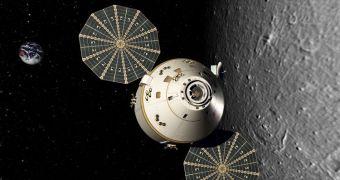In a decision made late Wednesday, on September 29, the US Congress passed the NASA authorization bill, which set the amount of funding the American space agency will get for 2011, and also what its main avenues of development should be.
Landing on the Moon by 2020 is no longer the main objective at NASA according to the new document. The goal has shifted towards missions to a nearby asteroid by 2025.
By the late 2030s, NASA is to deploy a mission to Mars, says the new document, which has been heatedly debated over by representatives from both sides of the aisle. There were a lot of interests at stake in this piece of legislation.
Oddly enough, NASA deputy Administrator Lori Garver said yesterday, September 30, that the Moon still remains a priority, regardless of the fact that Project Constellation got the boot.
This initiative was a combined approach to getting to the Moon, but cost overruns and delays in scheduled have the Project unfeasible in the eyes of a presidential panel that investigated it in 2009.
Following the release of these results, US President Barack Obama asked in his 2011 budget proposal that NASA quit the Project, and turn its attention to near-Earth objects (NEO) and to Mars.
Following the decisions stated in the bill, going to Earth's natural satellite will be sacrificed for other types of mission. But Garver believes that the new measures somehow don't affect the long-term goal of returning to the Moon.
“Lunar science and lunar exploration is alive and well in NASA. I just won't agree that this ends the moon as a destination,” she said in a teleconference.
“We look up in the night sky and see the moon and it is an inspiration to us all. My first son's first word was 'moon',” she went on to say.
“Of course, we have been there with 12 humans. We will be going back with humans. We will be going back with robots. And the fact that we are charting the next destination as an asteroid is nothing against the Moon,” she added.
At this point, the American space agency only has a single spacecraft around the Moon, and namely the Lunar Reconnaissance Orbiter (LRO).
Other nations, such as China, India and Japan, also plant to send orbiters and probes to lunar orbit, or even its surface, in the coming years.
With its $19 billion for 2011, NASA needs to ensure that it maintains its position as a leader in innovation.

 14 DAY TRIAL //
14 DAY TRIAL //